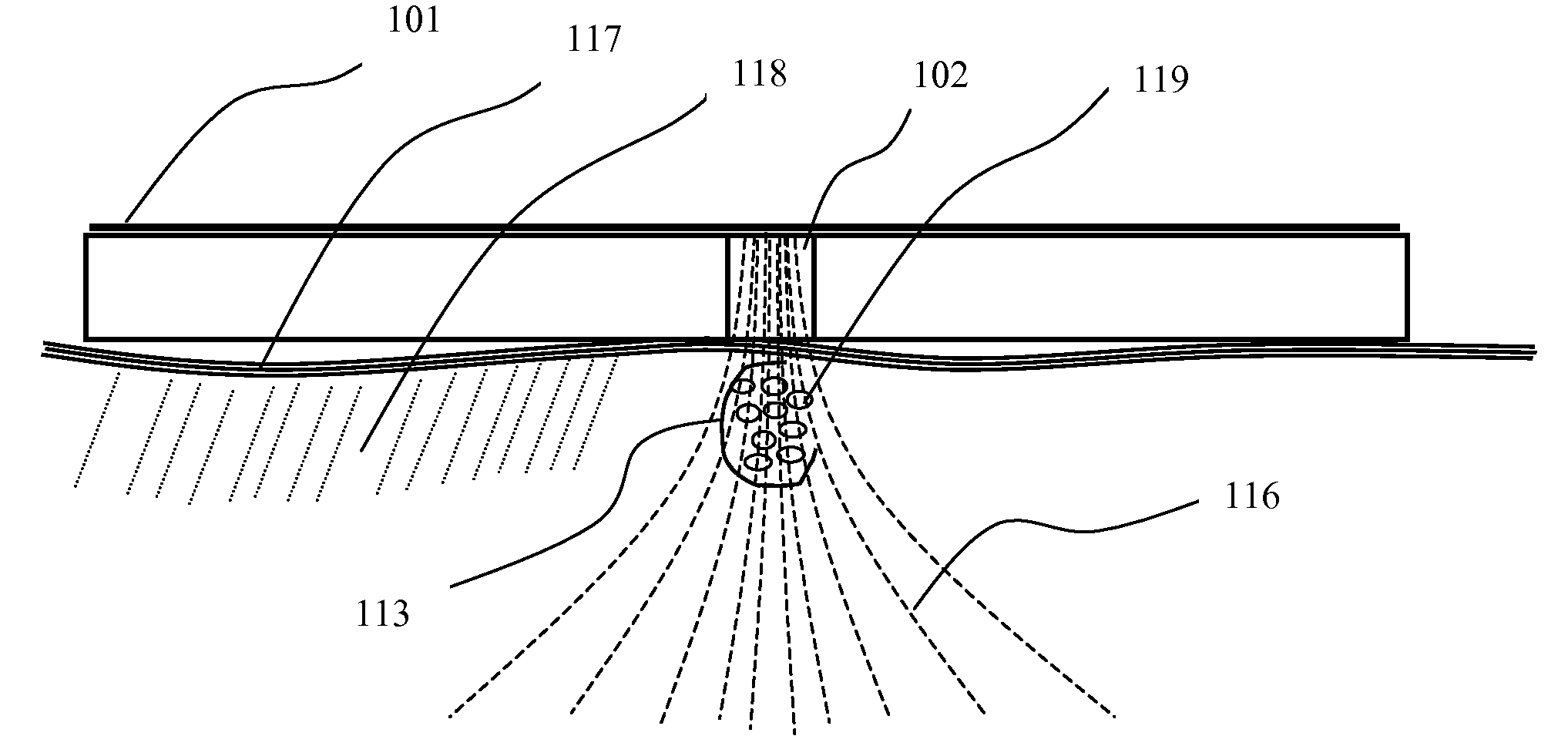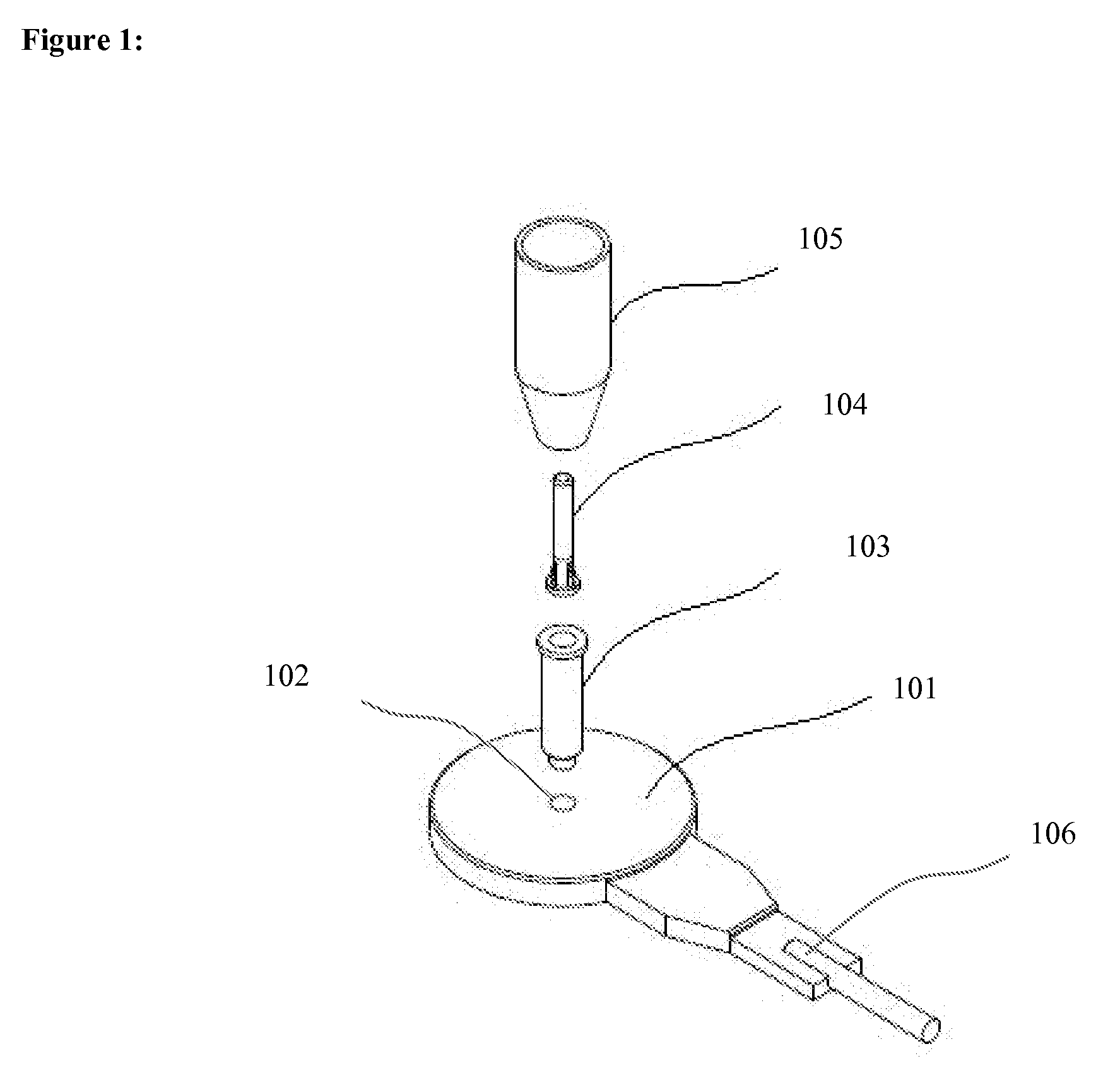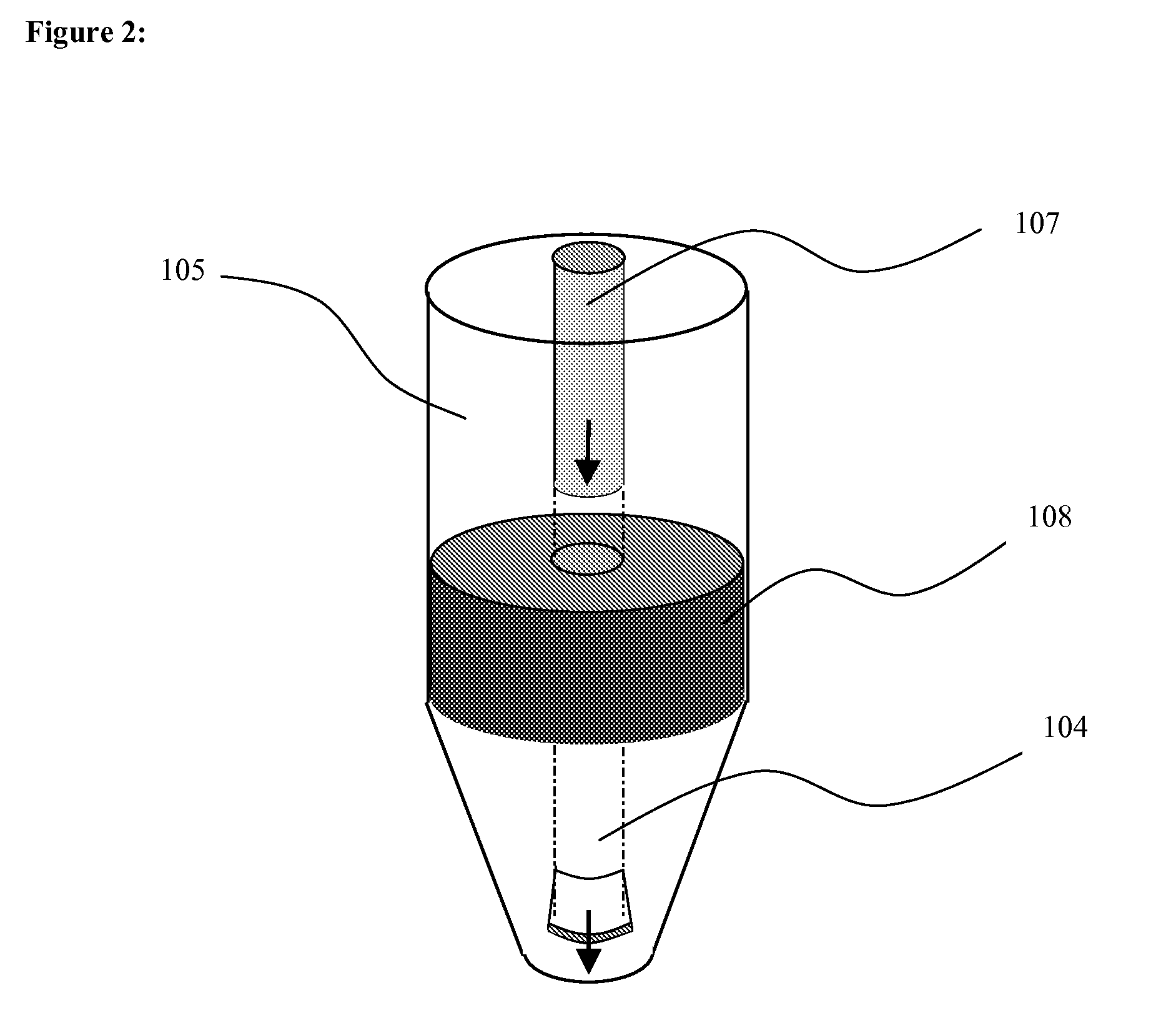Method of contactless magnetic electroporation
a magnetic electroporation and contactless technology, applied in the field of contactless magnetic electroporation, can solve the problems of insufficient quantity or size of pores, apoptosis or cell lysis, pain, infection risk, etc., and achieve the effect of not having an effect on the efficiency of transfection
- Summary
- Abstract
- Description
- Claims
- Application Information
AI Technical Summary
Benefits of technology
Problems solved by technology
Method used
Image
Examples
example 1
[0054]Experimental evidence of effective magnetopermeabilization was demonstrated by 5 sec series of monophasic pulses delivered at the rate of 10 pulses / sec for a total of 50 pulses per DNA injection site. Six injection sites were prepared, each with an intradermal injection of approximately 20 microliters of 1 mg / ml concentration gWiz-GFP (Green Fluorescent Protein plasmid from Aldevron LLC, Fargo, N. Dak.). The rise time of each magnetic pulse from zero to approximately 4 tesla was achieved within 1 microsecond, for a magnetic field rate-of-change of at least 4 tesla / microsecond. This actual pulse pattern is shown in FIG. 13b. The experimental results in terms of plasmid DNA expression for monophasic pulses are seen on the left side of FIG. 15c.
example 2
[0055]Similar experimental evidence of magnetopermeabilization was demonstrated by 5 sec series of biphasic pulses delivered at the rate of 10 pulses / sec, for a total of 50 pulses per DNA injection site. Six injection sites were prepared, each with an intradermal injection of approximately 20 microliters of 1 mg / ml concentration gWiz-GFP (Green Fluorescent Protein plasmid from Aldevron LLC, Fargo, N. Dak.). The rise time of each magnetic pulse from zero to approximately 4 tesla was within 1 microsecond, for a magnetic field rate-of-change of at least 4 tesla / microsecond. This actual pulse pattern is shown in FIG. 14c. An expanded time base in FIG. 14d indicates the rise time closer to 400 nanoseconds, which equates to a magnetic field rate-of-change to 4 tesla / 400 ns=10 tesla / microsecond. The experimental results in terms of DNA expression for biphasic pulses are seen on the right side of FIG. 15c. When fewer pulses were delivered per DNA injection site, such as comparing 20 pulses ...
PUM
 Login to View More
Login to View More Abstract
Description
Claims
Application Information
 Login to View More
Login to View More - R&D
- Intellectual Property
- Life Sciences
- Materials
- Tech Scout
- Unparalleled Data Quality
- Higher Quality Content
- 60% Fewer Hallucinations
Browse by: Latest US Patents, China's latest patents, Technical Efficacy Thesaurus, Application Domain, Technology Topic, Popular Technical Reports.
© 2025 PatSnap. All rights reserved.Legal|Privacy policy|Modern Slavery Act Transparency Statement|Sitemap|About US| Contact US: help@patsnap.com



